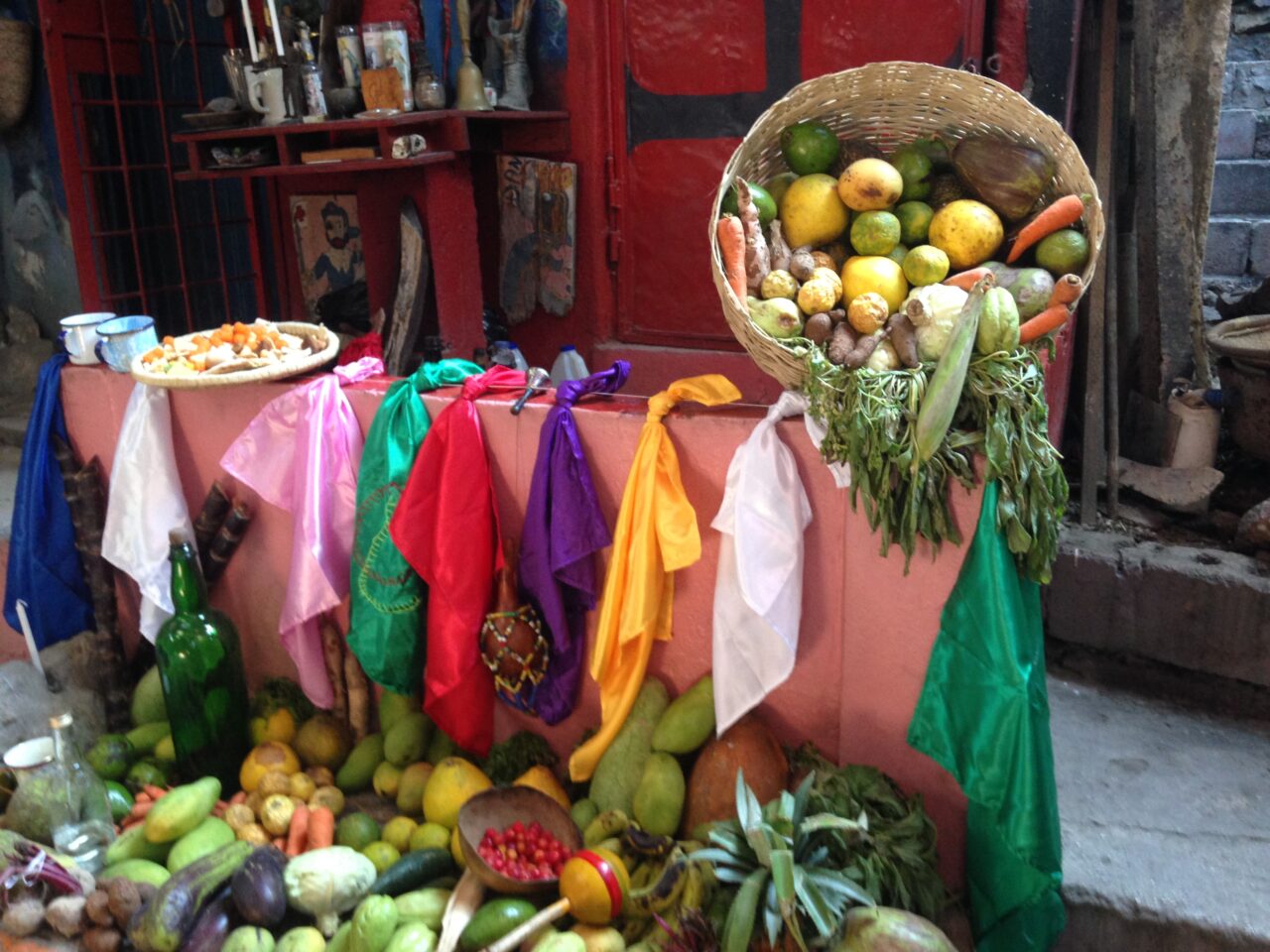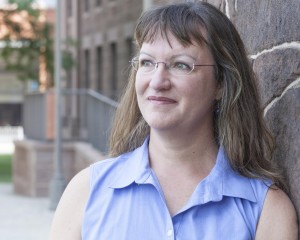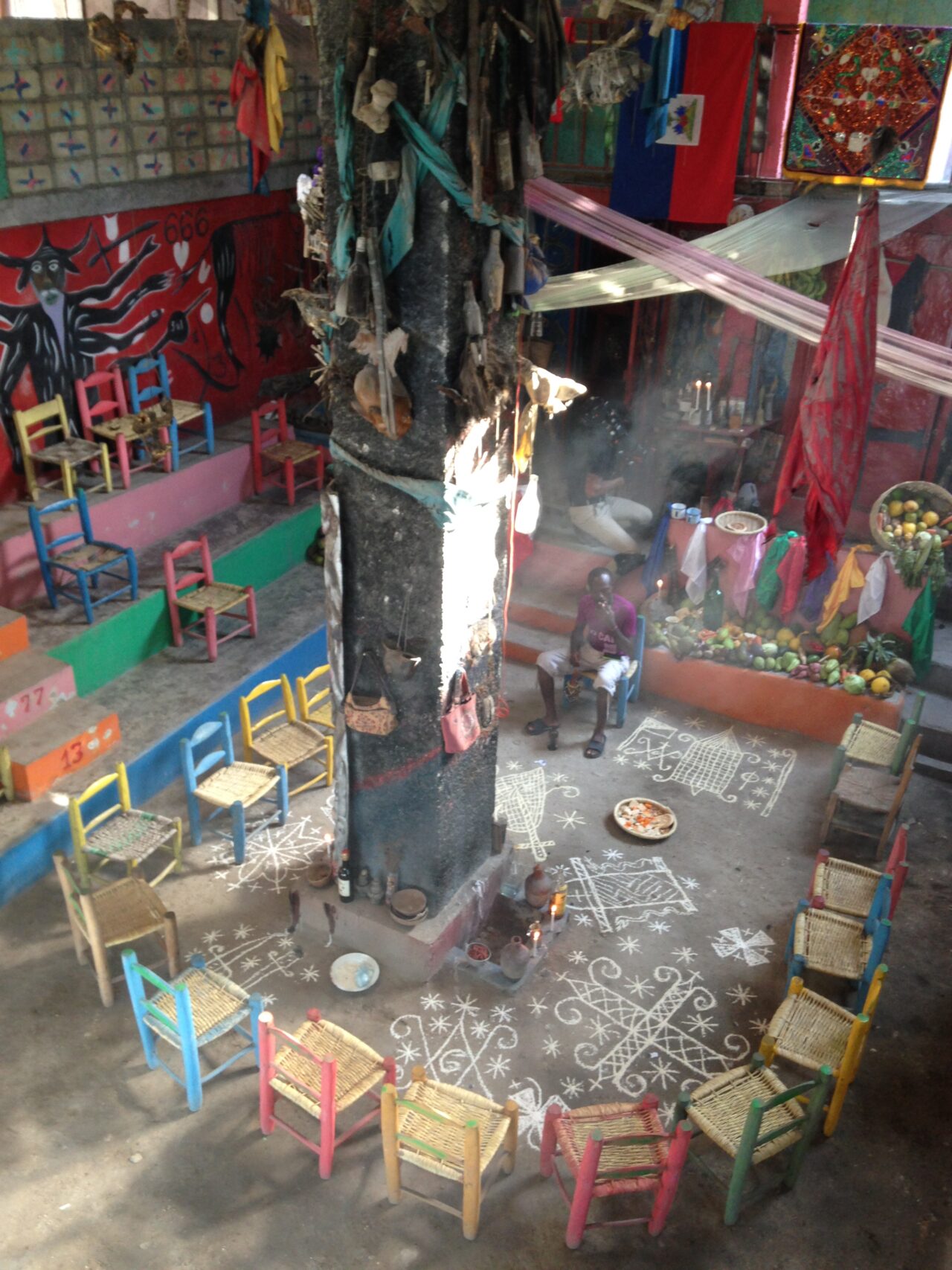Religion Prof Receives Fellowship to Help Preserve Vodou Temple

As political violence spreads throughout Haiti and gangs take over neighborhoods, local Vodou temples are vulnerable to destruction, losing an important part of the country’s religious and cultural patrimony.

Professor of Religion Elizabeth McAlister is working alongside colleagues in Haiti to help preserve the precious art and sacred objects at one particular temple. To support her efforts, McAlister has recently been named a 2023 Crossroads Research Fellow by Princeton University. The Crossroads Project “responds to challenges that call for deeper public understanding of and scholarly engagement with Black religious histories and cultures,” according to its website.
McAlister, Lewis A. Clorméus, who teaches at the Université d’État d’Haïti, and Jean-Daniel Lafontant, guardian and spiritual servant of the Sacred Vodou Temple Na-Ri-Veh 777, will be working together to expand the Espas Mikolan website as a place to digitally preserve the Haitian historical treasures found in the temple. The temple houses sacred objects from the pre-Columbian period, the period of slavery, the Haitian Revolution, as well as contemporary works of art.
“It’s a repository of historically and culturally relevant objects. It’s also singular in that the main ritual elder is an art collector, so he has invited some of the best artists in Haiti to come in and do installations. Some of those installations have been claimed by Vodou spirits, who now own the installations and have made the art objects into sacred spaces,” McAlister said.
The researchers will be working with student interns to annotate and provide context for images of the sacred objects and artwork, while also interviewing members of the congregation to provide oral history of the institution. Their hope is that by offering easily accessible information, scholars and artists would have a greater opportunity to learn about the inner workings of a tradition that is often misunderstood.
McAlister described Vodou as being called a religion to “gain the respect and rights a religion garners.” “But actually, it exceeds the category of religion. It is a way of organizing space and agriculture. It’s a way of understanding cosmology—the shape and trajectory of the universe. It’s a way of understanding the soul from before birth to after death. It’s a way of spiritual, physical and mental healing,” McAlister said.
Sacred Vodou Temple Na-Ri-Veh 777 had been established two decades ago in the Port-au-Prince neighborhood of Grand Bel-Air. Temples like this one dot the city and play an important role in the life of a neighborhood, McAlister said. With the country’s descent into political violence, the temple is under threat from gangs that control many of the surrounding areas. “This is violence that is being sanctioned by oligarchs and politicians,” McAlister said.

This temple is a place of refuge for youth hiding from gangs, members of the LGBTQ+ community, and other displaced people, McAlister said. About 15 people currently live there. “All members have their personal activities, but they constitute an important nucleus in the day-to-day life of the temple,” wrote Lafontant in his proposal. “Scores, if not hundreds of people visit the temple on any given year to assist and dance at rituals, to consult with the various vodouvi (initiates) there.”
In addition to its role as a place of worship, it serves as a kind of community center—members of the temple occasionally walk in to share a meal together, perform music, or play cards. “It’s a flexible space that can be transformed according to what is needed in the moment,” said McAlister, who has attended services at the temple. “It was a vibrant community of spiritual activity.”
Vodou temples also often serve as mutual aid societies. In a community where finding medical care can be difficult, people come to the temple for traditional and spiritual healing. “People often bring their children there to be treated for fevers and colds,” McAlister said.
Because of the gravity of the situation, time is not currently on the researchers’ side to digitally preserve the artifacts. A fire damaged half of the building in 2021. Heavily armed gangs of young people rove around, battling with representatives from the government and other gangs for control of swaths of the city. With the stakes this high, McAlister and her colleagues see the work as vital. She hopes to add to the team a Wesleyan student research assistant through the Digital Scholarship Innovation Fund.
“These spaces are bastions of Haiti’s creativity. Their sanctuaries contain the living memory of the history of the people of Africas and the Americas. Likewise, important elements of European religious arts cohabit with these primary traditions. These spaces carry the foundation of the Haitian nation and constitute a crossroads of the living heritage of the vodouvi community,” Lafontant wrote.

